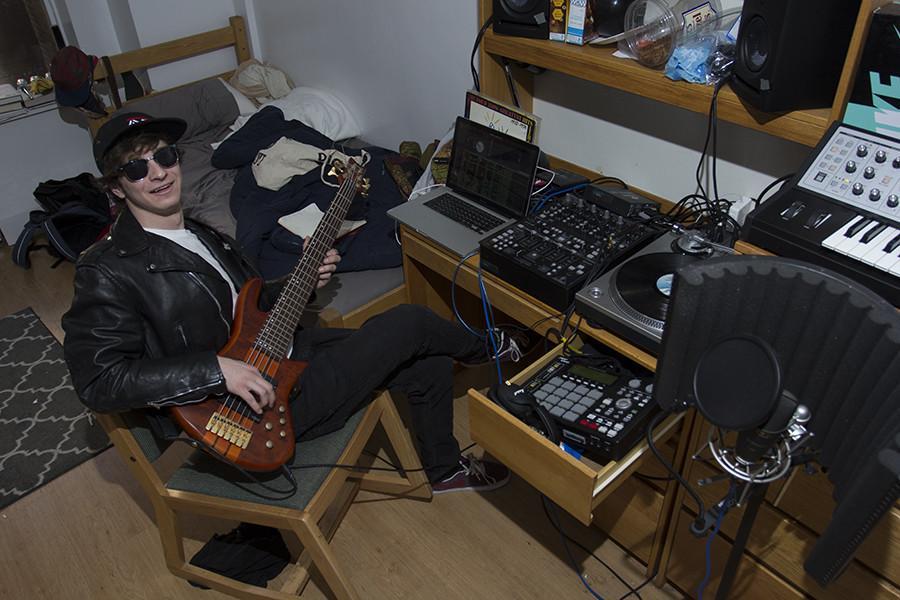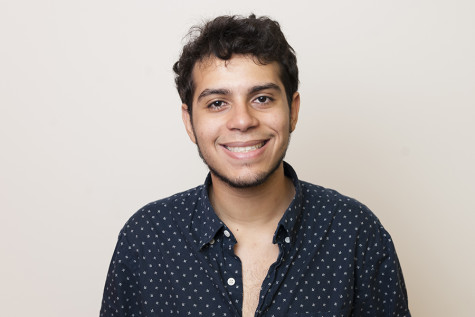Steinhardt freshman talks early success
Harrison Holmes set up a studio in his Rubin dorm room.
March 5, 2015
Though only a freshman in the Steinhardt School of Culture, Education and Human Development’s music technology program, the electronic artist Harrison Holmes, also known as Sleestak, has been prolific with his musical output. With over 90 tracks on Soundcloud and a new five-song LP, Sleestak makes accessible and enthralling music that features chill-wave inspired beats. WSN sat down with the DJ to discuss his New York City shows, his songwriting and his inspirations.
WSN: How did you get your start in music?
S: I was classically trained in violin and piano when I was really young. From there, I started to accumulate more instruments and play around with different types of theory and venture into the electronic music type of world. There, I was really teaching myself; I didn’t have a mentor. The classical training for me was my basis, the foundation for all the music I’m doing.
WSN: How does classical training help in the creation of electronic music?
S: The same music theory that goes into classical music goes into electronic music. I’m actually writing a paper about this right now, and you don’t have to include it, but there are various minute aspects that I was basically doing when I was 5 playing sixteenth notes and triplets — it just has different instrumentation.
WSN: Who are your inspirations?
S: Right now, my main ones are the Soulection radio team out in L.A., because they are making a sound I admire. It derives from sampling music, but it’s also full of creativity. Besides that, I’ve been collecting records since I was nine, so really I draw inspiration
from everywhere.
WSN: What was the first record you ever collected?
S: First record I ever collected was Clutch Hopkins’ “Walking Backwards,” and I got it at Central Square Records in Destin, Florida. Clutch is dumpster jazz, so it’s jazz but made with crazy handmade instruments, and you’d never hear these sounds anywhere else.
WSN: What are you doing after NYU and while you’re here?
S: While I’m here, although I’m in the audio field, I think it would be great to incorporate some visual stuff into my set, so visuals reacting to what I play onstage. I also want to improve my songwriting. In high school, I mostly did sampling, but now I’m in a city where everyone is competing to be really great musicians and I just feel like I need to put my best foot forward and write some music that really counts.
WSN: As for the future, do you have any new projects coming up or anything you would like people to know?
S: I just released five tracks called “My Little Album Of Electronic Beats To Bump In Your Headphonez.” I just felt like I made these songs at a certain quality that they could be released. Ever since coming to New York City, I always wanted to start writing quality music, and lately I feel like I’ve been doing that, so if I could start building a bigger fan base, the better.
A version of this article appeared in the Thursday, March 5 print edition. Email E.R. Pulgar at [email protected]
















































































































































